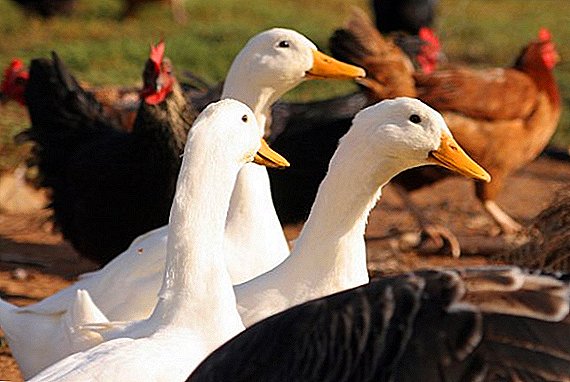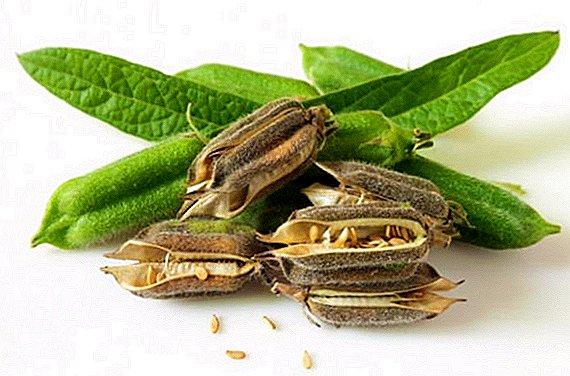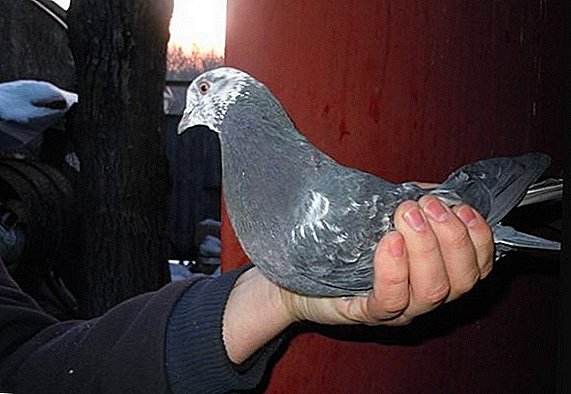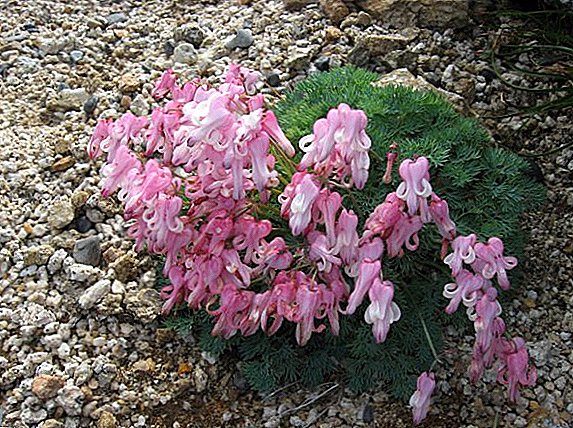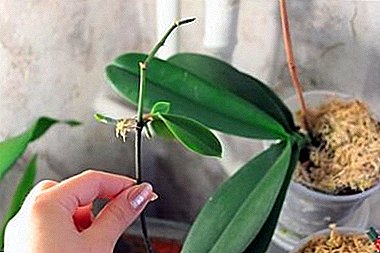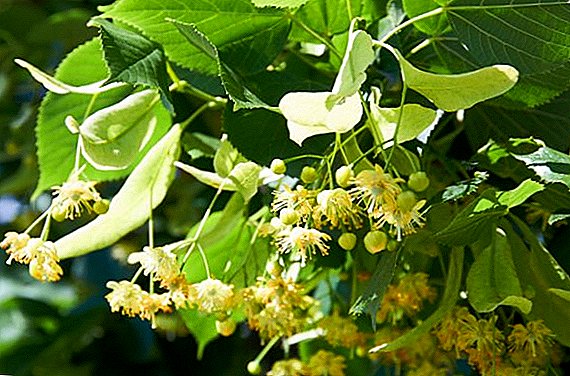 Lipu was always respected and considered her a source of vitality. This tree is an excellent remedy for depression and hypochondria. Among the limes, a person feels comfort, warmth and tranquility. Let's see whether it is possible to grow linden on the site and how difficult it is to plant and care for this beauty.
Lipu was always respected and considered her a source of vitality. This tree is an excellent remedy for depression and hypochondria. Among the limes, a person feels comfort, warmth and tranquility. Let's see whether it is possible to grow linden on the site and how difficult it is to plant and care for this beauty.
Choosing a place for planting linden on the site
Although linden and refers to unpretentious plants, but it must be borne in mind that she loves sunny places. The soil may not be too fertile, but well drained. Perfectly the linden feels on the sandstones fertilized by humus.
Important! When choosing a site for planting, it is necessary to consider that the adult linden has a rather large size.

When to plant
Although it is an unpretentious tree, the lifespan of a linden depends on how well the tree was planted. It is easiest to transplant linden saplings into cool, wet weather. The best time to plant a linden is autumn..
You can plant seedlings in the spring, but young shoots are very sensitive to frost.
Planting young linden seedlings
 The linden reproduces well with seeds, stem branches and root shoots. However, this tree is often propagated by seedlings.
The linden reproduces well with seeds, stem branches and root shoots. However, this tree is often propagated by seedlings.
Before planting linden, prepare pits. For standard seedlings with a height of 50-70 cm, the hole should be 50 cm in diameter and 50 cm in depth.
Drainage is poured at the bottom of the pit (10-15 cm) - pebbles, rubble, broken bricks. This layer is covered with humus diluted with superphosphate (50-60 g).
A sapling is placed in a prepared pit and covered with soil mixture (1 part of sod land, 2 parts of humus and sand). The optimum pH level is 6.5-7.5.
If several saplings are planted, the distance between the pits should be 3-4 meters, if a linden hedge is formed, the distance is reduced to two meters.
Although linden and tolerates transplant normally, but when planting seedlings should be careful about the rhizome. The root neck of the seedling should remain at ground level. If the neck is a little lower, it is not critical for lime.  After planting and the first 7-8 days, the seedlings are watered abundantly.
After planting and the first 7-8 days, the seedlings are watered abundantly.
In order for water to accumulate at the location of the linden root system, it is necessary to form a near-stem hole.
Did you know? Lipa - the same age as dinosaurs. She endured both the ice age and global warming. Lipu can be called the only witness of great events. In the Middle Ages, ladies held dates under the canopy of lindens, and in the 18th century, thousands of linden trees were planted in honor of the great French revolution in Paris. Since then, linden has become a tree of happiness and freedom.
Linden Care Tips
Like many crops, linden has its own agricultural cultivation, which includes watering, feeding, pruning and weed removal.
Watering and feeding
The linden is very demanding for watering, especially at the seedling stage.
 In adulthood, the tree tolerates a short drought well. However, in dry time, additional watering is required at the rate of 1 bucket per 1 square meter. m. the projection of the crown of lime.
In adulthood, the tree tolerates a short drought well. However, in dry time, additional watering is required at the rate of 1 bucket per 1 square meter. m. the projection of the crown of lime.
In order for the tree to be pleased with its beauty and lush flowering, it is necessary to know how and how to feed the linden in the spring. In early spring, fertilizer is applied from mullein (1 kg), urea (15 g), ammonium nitrate (25 g), diluted in ten liters of water.
In the fall, it is enough to fertilize linden with 15-20 grams of nitroammofoski.
Did you know? Lipa has long been revered by Slavs. Not without reason many settlements are associated with this tree: Lipetsk, Lipnyany, Lipki, Lipovits, Podlipki.
Weed removal and soil loosening
Removing weeds is an important point in the care of linden trees - their presence inhibits the growth of the tree. In addition, simultaneously with the removal of weeds, it is necessary to loosen the soil (to a depth of 10-15 cm) in order to provide oxygen access to the roots. It is optimal to carry out loosening 2-3 times per season.
Mulching
Mulching, like cutting linden, is an important point when growing a tree. Mulch near-stem circle with peat, fallen leaves, wood chips, sawdust or peat compost. The height of the layer should be 8-12 cm.
Did you know? Lipa is popularly called lutoshka, lutokha, lubnyak, urinal.
Haircut and Trim
The first pruning of seedlings can be done the next year after planting. Pruning is carried out not only for the formation of linden crown, but also for sanitary purposes.  In winter and early spring, dry branches are pruned. Growing in the form of hedge linden trimmed in the first year in early spring and late summer. Subsequently, such a haircut is carried out 4-5 times per season.
In winter and early spring, dry branches are pruned. Growing in the form of hedge linden trimmed in the first year in early spring and late summer. Subsequently, such a haircut is carried out 4-5 times per season.
Important! In the first haircut can not shorten the branches by more than 1/3.
Fight against diseases and pests
Most often linden is affected by such diseases as:
- perforated and black spot (control methods: destruction of fallen fruits and leaves as sources of infection, treatment of shoots with 1% Bordeaux liquid);
- white rot (for the fight used copper-containing drugs, such as copper sulfate).
In addition to these diseases, such linden pests are also dangerous:
- bed bugs;
- scythes;
- scoop pyramid;
- silkworms;
- gall mite;
- bark beetles;
- pipe-beetle;
- lilac hawk moth;
- leafworm;
- goldtails;
- peppered moth

To combat these pests, young trees are sprayed with insecticides. In addition to insects harm linden birds and rodents.
Selection of partners and the use of lime in the design
Linden is widely used in landscape design. Due to the compactness of leafy crown, good shade tolerance and undemanding of irrigation and soil, various types of linden are planted in city squares, parks, on boulevards, in forest plantations and in summer cottages. A linden tree also survives well in an aggressive urban environment - it is well tolerated by dust, smoke, gas and dirt.
They like to use linden during gardening due to its decorative effect at any time of the year. In spring, tender greenish leaves bloom on linden, and in summer a dense crown gives a reliable shade. Especially good flowering linden, when it is covered with fragrant flowers. In the fall, the foliage acquires a bright yellow shade, which warms in cloudy weather. Against the backdrop of snow linden strikes with a bizarre outline of the branches.  They grow lime as a hedge, bosquets, berso and green walls. Such forms are used today for the design of parks. Linden looks good in single plantings and in groups of trees of various sizes and species. In the preparation of herbal compositions, it is necessary to take into account how fast the linden grows and what role it will play in this process: to become the main focus or shade the virtues of other plants.
They grow lime as a hedge, bosquets, berso and green walls. Such forms are used today for the design of parks. Linden looks good in single plantings and in groups of trees of various sizes and species. In the preparation of herbal compositions, it is necessary to take into account how fast the linden grows and what role it will play in this process: to become the main focus or shade the virtues of other plants.
Important! In roadside plantations linden can suffer from salt, gas and dust. In such conditions, the plant is more susceptible to diseases and pests.
Most often in landscape design they use such varieties of linden as:
- American (black). The homeland of this linden tree is North America. It grows up to 40 meters, has a wide ovate crown.
- Fine-grained. Motherland - Europe and Western Siberia. Differs in small compact leaves and medium-sized ovoid crown.
- Silvery. Wild-growing with original silver foliage.
- Rubra. Tall tree with a conical crown. Differs bright coral color of young shoots.
- Linden ordinary. Beautiful view with a large crown for a single landing and group.
 The question "what to plant next to the lime tree" can be given a definite answer: almost all shrubs, trees, grass crops. Linden looks most harmonious with:
The question "what to plant next to the lime tree" can be given a definite answer: almost all shrubs, trees, grass crops. Linden looks most harmonious with:- oak;
- beech;
- maple;
- rowan.
Since the linden is a durable tree, its plantations can be used without renewal for up to two hundred years.
Did you know? Linden flower can be represented as a formula: * K5C5A5 + 5 + 5 + 5G (5)
Lipa - medicine and valuable honey plant
Lipa, due to the presence of biologically active substances has useful properties.
For therapeutic purposes, use:
- Linden blossom. It has a strong diaphoretic and diuretic effect. Effectively reduces the temperature, fights various inflammations. A decoction of linden flowers is indispensable for colds.
- Bark. Excellent tool to enhance bile formation. Young bark is used to treat gout, hemorrhoids, burns.
- Wood From it get the tar, which effectively treat eczema.
- Foliage and buds. Used as an emollient for boils.
- Fruit. Used to treat bleeding.
- Charcoal. It has the unique ability to bind harmful substances in a volume 90 times greater than its own. It is used for poisoning, tuberculosis, diarrhea, diseases of the stomach and intestines, as well as in the treatment of open wounds.

Preparation of medicinal raw materials for industrial production is carried out from trees whose age reaches 90 years. It is at this time with the linden you can get the maximum amount of raw materials.
Linden is also used in cosmetology as an important component in the manufacture of skin and hair care products.
Besides, linden - the perfect honey tree. Lime honey is not only distinguished by its excellent taste and aroma, but also by its healing properties. All lindens are recommended to be grown on the site. Thus, it is possible to increase the productivity of bees and the quality of honey several times. 
Important! Despite the fact that linden has a lot of useful qualities, it is categorically impossible to take people with chronic heart disease.
At first glance, it seems that growing lindens is a laborious task. But, having counted all the advantages of this tree, it can be concluded that all the labor costs are worth it. If you know how to choose the linden sapling, how to plant and care for it in the future, you will always have a natural healer and a beautiful, rather unpretentious tree that will delight you for a long time and remind you to your grandchildren.




